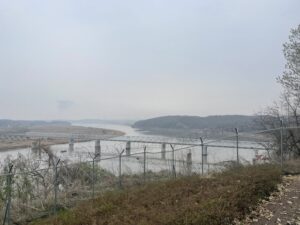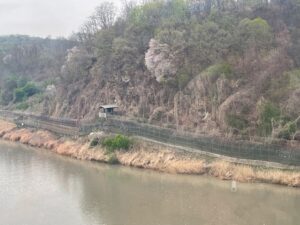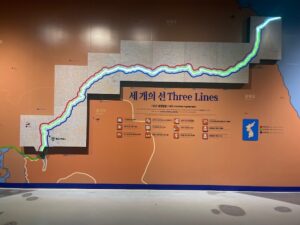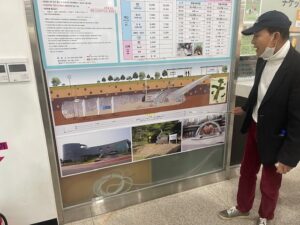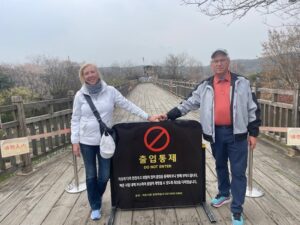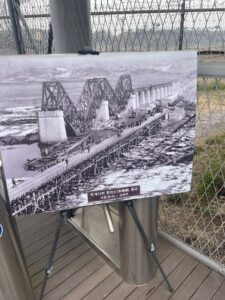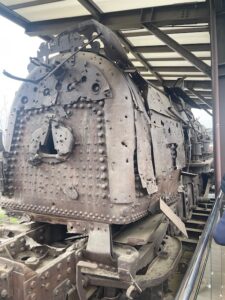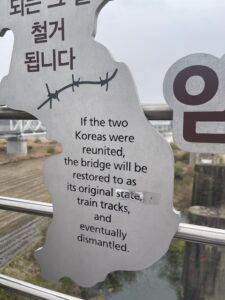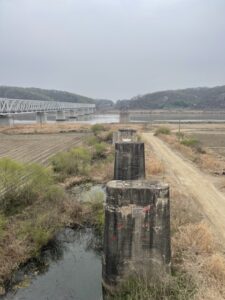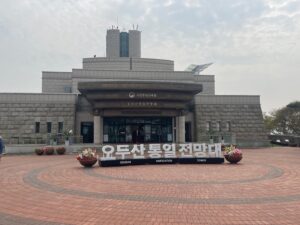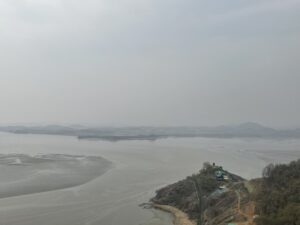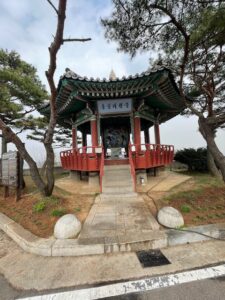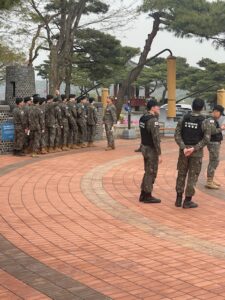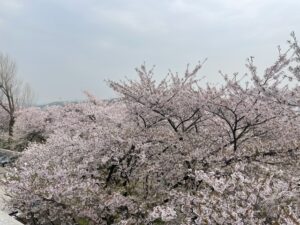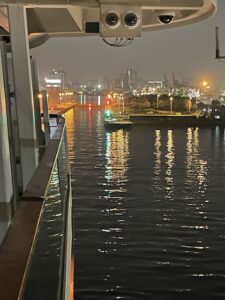
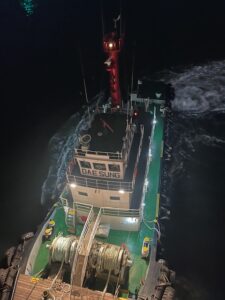
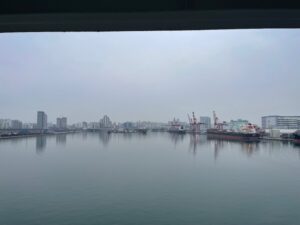
Incheon is on the western coast of South Korea, a bustling metropolis pulsating with cultural richness and technological innovation. Renowned as the gateway to South Korea, Incheon seamlessly blends its rich heritage with a forward-thinking approach. Steeped in history Incheon bears the indelible marks of its past, evident in its ancient temples, traditional markets and historic sites along with modern marvels such as its skyscrapers and the International Airport, ranked one of the best in the world.
Our adventure today took us to the DMZ (Demilitarized Zone), which bisects the Korean Peninsula and is a clear demarcation of Political ideologies. During the Korean War, the DMZ was the no man’s land, or buffer zone, between the North and South. Even today, the DMZ winds 151 miles across the Korean Peninsula, from the Han River estuary in the west to a point just below the 39th parallel in the east. We began our day at Imjingak Park, located just 7 km away from the demarcation line between South and North Korea. We rode the Paju Imjingak Peace Gondola and visited Camp Greaves which was a US Military installment during and after the Korean War. Today, it has been returned to North Korea serving as a venue for history and culture.
When WWII ended in 1945, Korea, which had been a Japanese colony for 35 years, was temporarily divided by the United States and the Soviet Union along the 38th parallel. Due to Cold War tensions, each half became a sovereign state. Both claimed to be the sole legitimate government of all of Korea and neither accepted the 38th parallel as permanent. The Korean War was fought between North and South Korea from 1950-1953. The north was supported by China and the Soviet Union while the south was supported by United Nations forces led by the United States. The area we visited was home to battle grounds during the war and the infamous tunnels that had been secretly dug by the North Koreans which allowed them to amass 30,000 men into South Korea in an hour’s time.
We stopped for lunch at a restaurant that introduced us to many different Korean dishes to enjoy such as Kimchi, Bugogi, and many different types of seaweed salad along with several different kinds of soup. It was delicious!
Our next stop was the Odusan Unificaiton Tower, located at the top of Mount Odu. Situated at the northernmost ceasefire line of the western front where the Han and Imjin River meet, it lies just .28 miles from North Korea. From our perch in the Observatory we were able to see both North and South Korea. One of the most notable differences visible from the observatory were the mountain ranges in the North are bare. They have used the woods to fuel fires and cook meals. The South’s mountains remain as forests. Our guide also said that to date, about 35.000 defectors from North Korea reside in South Korea.
We have another day to spend here in South Korea. We hope to take a little break from excursion tomorrow and are currently hatching a plan as to what we will do. These long excursion days take a toll as often, there are several hours on a bus to reach the areas we choose to see.
